Much of rural America has been cut off from access to effective public transportation for years. Where rural transit networks exist in the US, they usually consist of a combination of limited fixed route bus service along highways or major roads, combined with some kind of demand-responsive transit (also known as “dial-a-ride”). Because most rural transit agencies serve large, low-density areas, those fixed route buses usually run very infrequently, and demand-responsive trips must often be booked days, if not weeks, in advance.
Facing a lack of good transit options in rural areas, it’s no surprise that many Americans choose to drive. However, millions of people don’t have this option due to factors such as age, ability, and income that can make driving prohibitive. In fact, according to Smart Growth America, the “majority of counties with high rates of zero-car households are rural.” With no car and little to no public transit, many rural Americans are cut off from their communities creating major challenges from limited economic opportunity to health issues to social isolation.
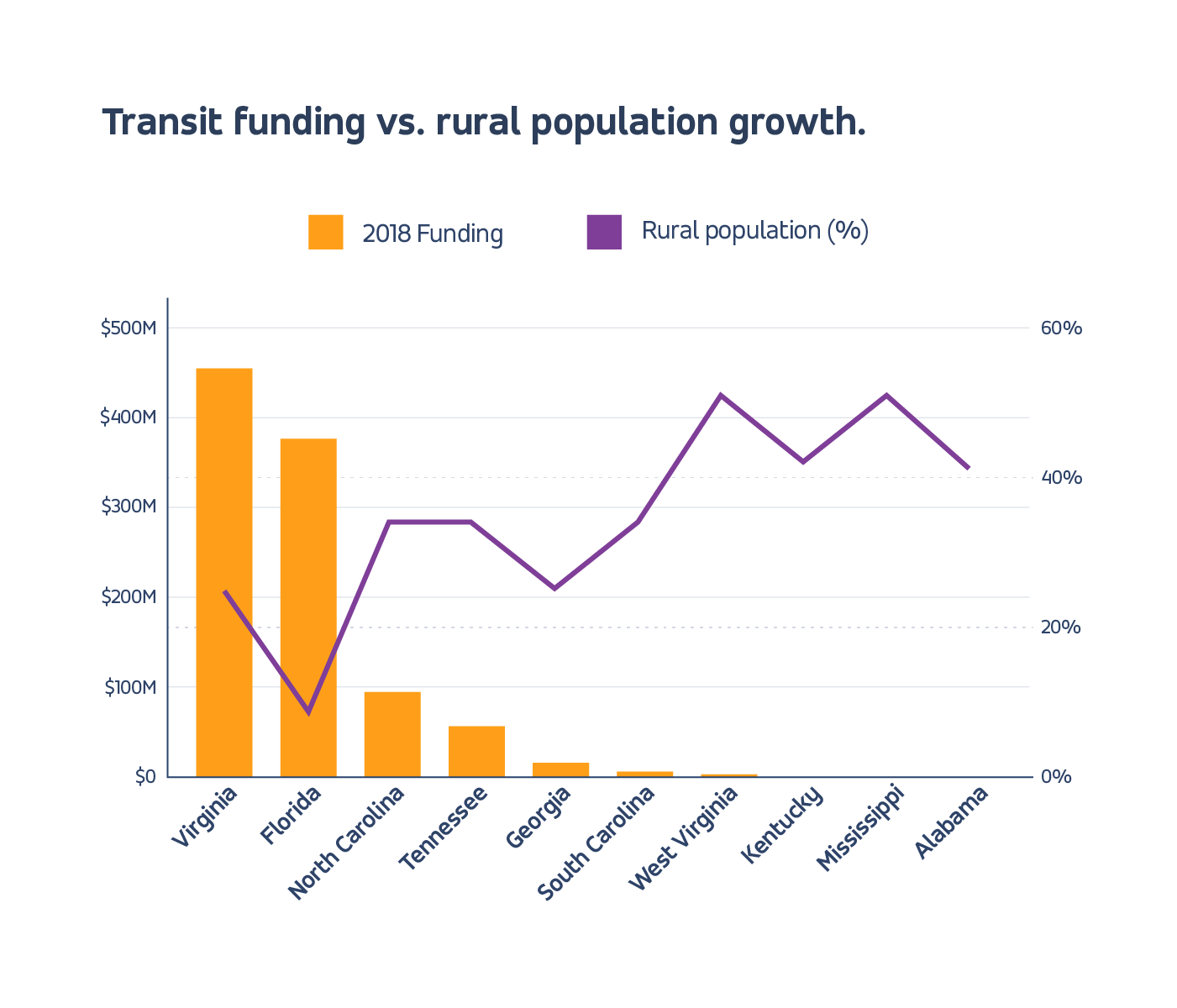
Limited rural transit is especially acute in the Southeast, where many states have large rural populations. West Virginia, Alabama, Mississippi, and Kentucky have over 40% of their populations in rural areas. Additionally, states with large rural populations tend to receive less federal and state funding for transit. In the chart above, we’ve graphed the percentage of rural population for each state in the Southeast and the amount of state funding provided by each state (data from AASHTO and 2010 census).
Rural communities in the Southeast are clearly facing an uphill battle, forced to serve a large number of residents with limited transit funding.
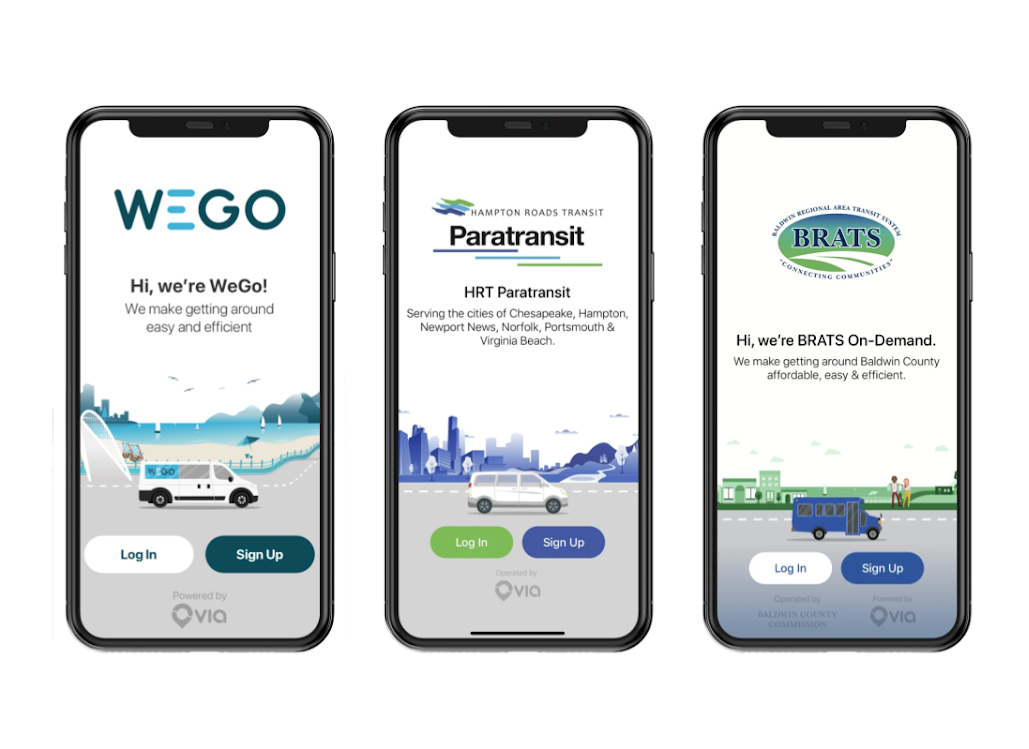
Communities changing the narrative with microtransit.
In many rural communities, the demand-responsive transit or dial-a-ride services that have long been the bedrock of public transportation offerings suffer from real deficiencies. Oftentimes, trips must be pre-booked, pickup and dropoff windows may be wide, and — when road construction or inclement weather mean a vehicle is running late — riders have no way of knowing why or how much longer they might have to wait. Scheduling and routing for legacy dial-a-ride is often done by hand, and these services tend to suffer from low-productivity, moving few passengers-per-hour at a high cost-per-trip.
On-demand transit technology can improve the quality and efficiency of rural public transportation, improving the rider experience while lowering the cost-per-trip. And while demand-responsive transportation is not a new concept, advances in both technology and consumer expectations — paired with highly-fluctuating demand patterns resulting from the COVID-19 crisis — have given it renewed relevance and importance. Via has partnered with a number of rural communities in the Southeast to transform outdated dial-a-ride programs and struggling fixed route services with on-demand microtransit, modernizing and expanding service for many rural Americans. Let’s talk through a few examples.
Baldwin County, Alabama: Operating just outside Mobile, the Baldwin Regional Area Transit System (BRATS) serves a community of 223,000 people across over 2,000 square miles. The BRATS dispatching team used to manually schedule and book each ride, which limited the number of rides they were able to serve. So, BRATS partnered with Via to launch on-demand microtransit and improve both efficiency and access to transit. Via worked with the BRATS team to design a service that would facilitate travel across the county, allowing riders to book both on-demand and pre-scheduled rides. The update has not only helped the BRATS team take back hours of administrative work but has also provided a significantly better rider experience.
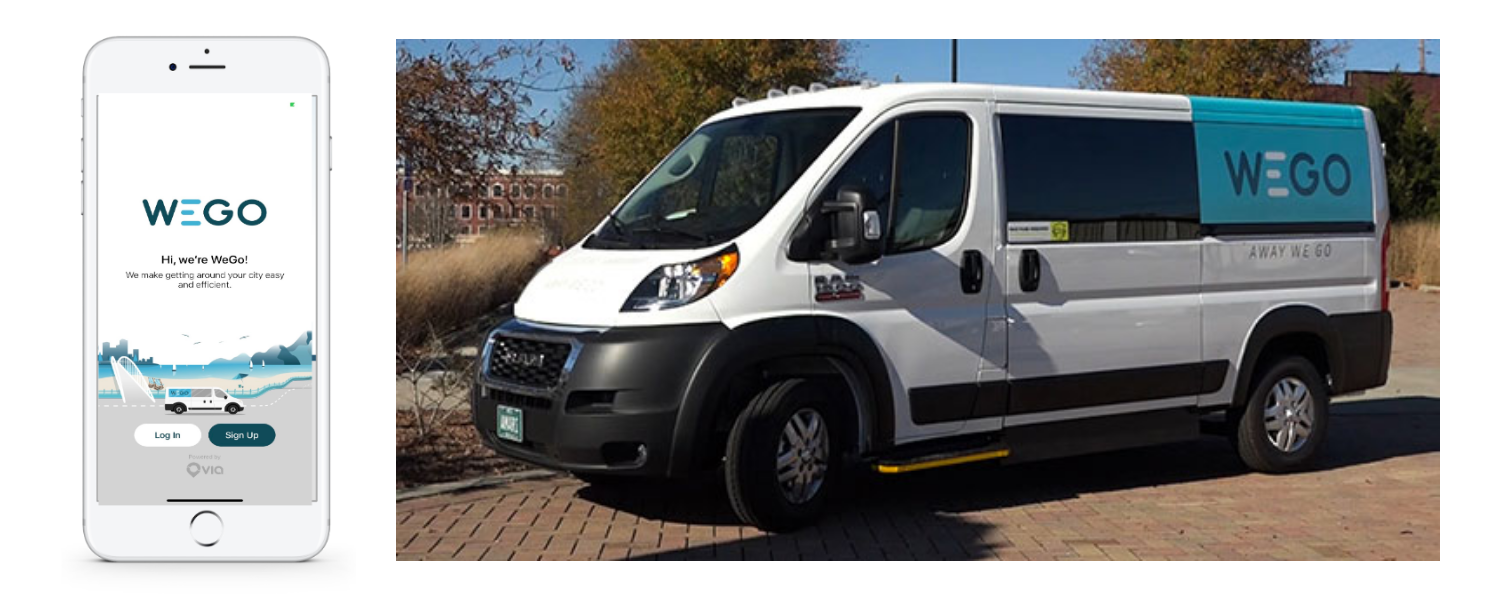
Hall County, Georgia: Hall Area Transit has the challenge of covering the growing urban area of Gainesville, GA, and a large rural area surrounding Gainesville. The agency turned to Via to design and manage a microtransit service that could cover both the urban and rural areas in a more efficient manner than their existing three fixed-routes and dial-a-ride service. Hall Area Transit launched the microtransit service WeGo in December of 2020 in Gainesville and is already seeing a big difference in customer service.
As explained by Phillippa Lewis Moss, the Director of the Gainesville-Hall Community Service Center, “Retaining Via as our microtransit software provider is proving to be a game changer for our community. Gone are the days where passengers waited 30-60 minutes in the cold or heat for the next bus. With Via, our neighbors can quickly access a rideshare van with a click on their smartphone.” Hall Area Transit will expand the microtransit zone to cover the entire county in early March.
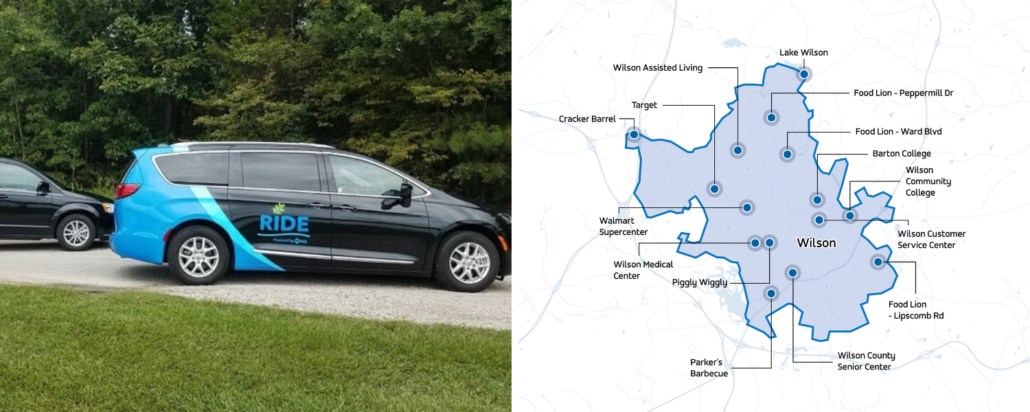
Wilson, North Carolina: A small but growing city in North Carolina, Wilson needed to overhaul its bus system, which was designed to meet the commuting needs of the 1960s and proved ill-suited to the changing economic landscape of the 21st century. In September 2020, Wilson partnered with Via to replace their fixed route system with an entirely on-demand network. The new service, named “RIDE,” covers all of Wilson with a fleet of 10 on-demand vans. Since launching in September 2020, RIDE has significantly improved mobility for residents of Wilson. 75% of customers book trips using the Via Rider App, and the service boasts an average rider rating of 4.9 out of 5 stars. Pre-COVID, Wilson’s fixed route system averaged 275 daily riders, and after the onset of the pandemic, ridership averaged 55 rides per day. Now, just months after launch, RIDE sees over 300 rides per day. 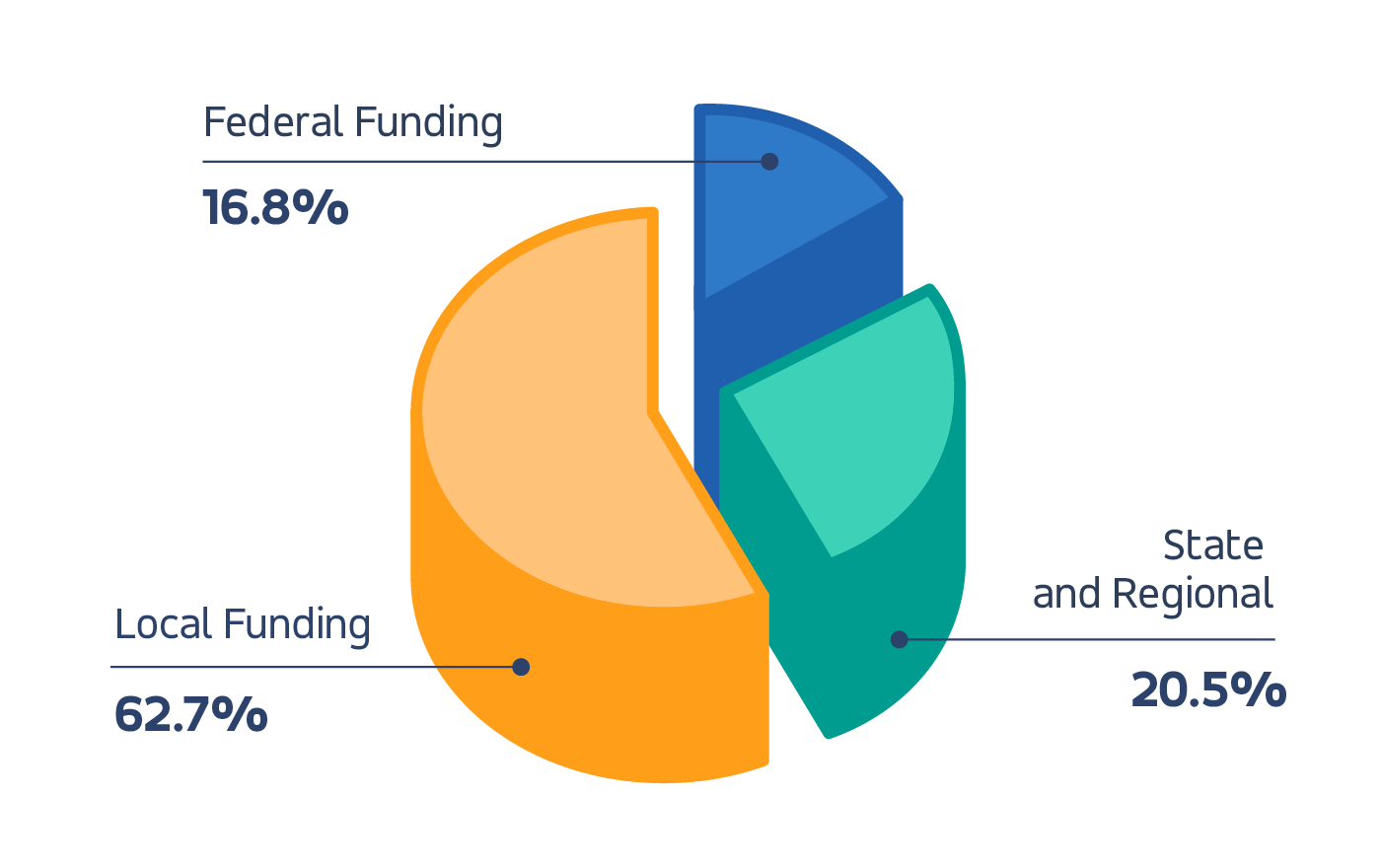
Note: This breakdown of funding sources depicts transit funding on a national level, not solely in the Southeast.
How to fund microtransit in the Southeast.
We’ve written a comprehensive blog post on creative ways to fund microtransit . However, like we mentioned above, funding a rural microtransit service can be a particular challenge in the Southeast, as many southern states provide less public transit funding than their counterparts on the coasts. But don’t count the South out! There are still a number of ways (local, state, and federal) to fund a new on-demand service. And states are often looking to invest in projects with the best ROI possible — making microtransit a very attractive option. If you have questions or want to brainstorm about any of the funding opportunities below, feel free to reach out!Federal
Federal transit funding comes in two main forms: formula funding and competitive grants.
For rural areas, formula funding is provided directly to a state’s department of transportation (e.g., NCDOT, GDOT, and ALDOT). State DOTs then determine how to divide formula funding among rural transit authorities and communities. Reach out to your state DOT to learn more about this process. If you haven’t received any federal funding in the past, you’ll need to go through the process of becoming compliant with federal regulations. But don’t let that scare you off! It’s something every state DOT understands and can walk you through.
Federal competitive grant programs are announced on the Federal Transit Administration’s (FTA) website. In the past, programs like the Accelerating Innovative Mobility (AIM) and Integrated Mobility Innovation (IMI) competitions have funded rural microtransit programs. Baldwin County worked with Via to apply for and win an IMI award in 2019 to launch their microtransit program. Via also worked with the City of Wilson on an AIM award in 2020 to replace their fixed route with microtransit. We post announcements about new FTA grants on our blog as soon as we hear about them. Applying for a federal grant can take some work, but we have experience working with a number of partners on successful grant applications and we’re here to help.
State
Many southeastern states do provide matching grants to FTA formula funds, either through state DOT funds or through state health and human services (HHS) transportation programs. GDOT provides additional state funds to supplement formula funds and simplifies this process by asking rural transit agencies to apply for both federal and state funds through a single application process. Other states have specific programs for rural transit or innovative transit programs. In Florida, the Service Development Program funds projects that feature a “new or innovative technique or measure can be used to improve or expand public transit services.” We recommend talking to your state’s DOT to find out what programs they have that can help fund your microtransit service. We’re also happy to share our knowledge and help with state grant applications.
Local
Most public transit funding for rural areas comes from local sources, whether farebox revenue or town and county budgets. Ballot measures are one potential way for local governments to raise dedicated funds for transit. Last year, the City of Austin passed Prop A — the first transit ballot measure in the nation to specifically fund microtransit. Prop A allowed CapMetro to fund rural transit in communities on the outskirts of Austin.
Access to public transportation in the rural Southeast can be limited and challenging to expand. But on-demand transit can be a lifeline for rural communities, improving the rider experience while lowering the cost-per-trip. Many southeastern communities are figuring out how to launch new services and update old ones, as evidenced by Wilson, Baldwin County, and Hall County. And we’d love to help you launch the next big success in your community. Get in touch



